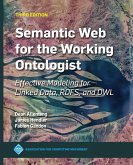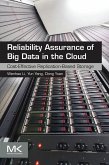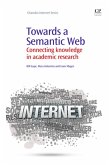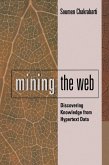Dieser Download kann aus rechtlichen Gründen nur mit Rechnungsadresse in A, B, BG, CY, CZ, D, DK, EW, E, FIN, F, GR, HR, H, IRL, I, LT, L, LR, M, NL, PL, P, R, S, SLO, SK ausgeliefert werden.
"Allemang, a scientist at a company that consults, trains, and provides products for the Semantic Web, and Hendler (computer and cognitive science, Rensselaer Polytechnic Institute) explain how web developers who are practitioners in another field, such as health care, finance, engineering, national intelligence, and enterprise architecture, can model data to fit the requirements of the Semantic Web. They detail how to construct semantic models, with a focus on the use of RDF (Resource Description Framework), RDFS (RDF schema), and OWL (Web Ontology Language) to accomplish specific tasks and model data and domains. This edition has been updated to incorporate new technologies such as SPARQL (SPARQL Protocol And RDF Query Language), OWL 2.0, and SKOS (Simple Knowledge Organization System). They include examples of Quantities, Units, Dimensions, and Types (QUDT) and The Open Biological and Biomedical Ontologies (OBO), as well as examples of how to use the Semantic Web to solve common modeling problems and a FAQ section on challenges." --SciTech Book News
"Overall, this is an easy-to-follow guide to the basic concepts related to building semantic Web ontologies. The book flows well from chapter to chapter, and the many examples illustrate the different topics. For beginners, it's an excellent introduction to the subject, which is exactly what the authors intended." --Computing Reviews.com









